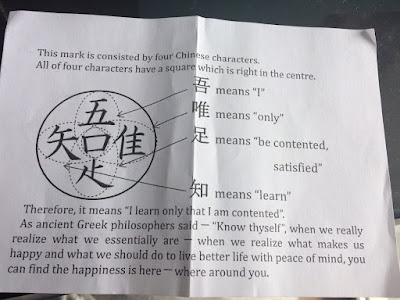
Li Naomasa, was a fearsome general and fought hard for Tokagawa and after defeating Ishida Mitsunari was gifted his castle for a job well done.

However, he hated living in his enemies castle and asked to build a new one on the site. Tokagawa agreed and construction began on what is now Hikone-jo [Hikone Castle]. The earlier castle was dismantled and the parts of it were used to build a new castle.

Unfortunately he died before the building was completed and it was passed down to his two sons.
This walkway was constructed in such a way as to be easily knocked down making the castle nearly impervious to attack.

The view while on the bridge.

This is what the majority of the castle looks like from inside.

This is not a good sightseeing experience if you have bad knees as there are 130 some steps just to get to the castle from the ticket gate. These steps are the long low steps rimmed in stone and filled in with cement.

Now these steps are doable, as you can just motor up them at your own speed. However, once within the castle there are two short staircases that lull you into complacency, don't fall for it! After those two wee staircases of about 6 steps each and a bit of a walk around, you'll find yourself facing 3 stair cases of doom! These are stairs that in a previous life were ladders and were just faced with stair material. No, I joke about that, but going up it is remarkably like climbing a ladder due to its extreme steepness of grade, with hand rails. It's the coming down bit that nearly unnerved me. With no embarrassment I'll happily admit to being afraid of heights and ladders are an issue for me. Coming down these ladder steps was a terrifying ordeal for me, where a time or two my terror was barely contained. The steps on these ladder steps are SLICK and the handrails held no comfort for me. By the time we regained the ground floor I was in a bit of a quiver and it took me a while to regain my equilibrium.
From the walls of the castle its possible to see for miles, both across a great expanse of Lake Biwa and the the surrounding area. While there are trees growing on the castle walls, during the time this was an active castle it was stripped bare of vegetation.

The castle and the town have a mascot that is freaking adorable, and everything you could think of has this image either stamped on, or made into stuffed animals. Grandson scored a stuffed mascot plushie, and it's a darned good thing I adore him or he wouldn't be getting it!
They had a mascot show while we were there and it was cute to watch, isn't he totally adorbs?

So, the Li family had a bell that would alert the surrounding area to invaders, in the 1800's the bell was moved so that it could be heard all over the western side of town. Today the bell is rung 5 times a day and we hung around to see/hear it rung at 13:00. Even though we were crazy close to the bell, it wasn't all that loud, but had an extremely long reverberation. They ring the bell 3 times each time it's rung. However, unlike western bell ringing, here it is rung at about 30 second intervals, about the same time as the last reverberation has ended is when the bell is rung again.














































